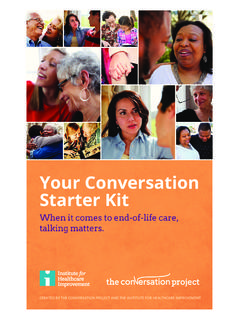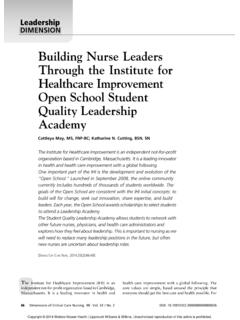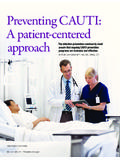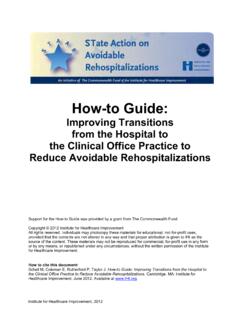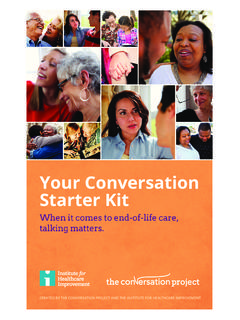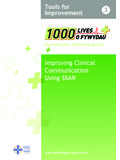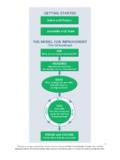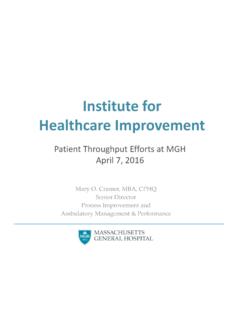Transcription of Effective Interventions to Reduce Rehospitalizations: A ...
1 institute for healthcare improvement , March 2009 1 Effective Interventions to Reduce Rehospitalizations: A Survey of the Published Evidence Support for the Effective Interventions to Reduce Rehospitalizations: A Survey of the Published Evidence was provided by a grant from The Commonwealth Fund. Copyright 2009 institute for healthcare improvement All rights reserved. Individuals may photocopy these materials for educational, not-for-profit uses, provided that the contents are not altered in any way and that proper attribution is given to IHI as the source of the content. These materials may not be reproduced for commercial, for-profit use in any form or by any means, or republished under any circumstances, without the written permission of the institute for healthcare improvement .
2 How to cite this document: Boutwell, A. Hwu, S. Effective Interventions to Reduce Rehospitalizations: A Survey of the Published Evidence. Cambridge, MA: institute for healthcare improvement ; 2009. Effective Interventions to Reduce Rehospitalizations: A Survey of the Published Evidence institute for healthcare improvement , March 2009 2 Introduction rehospitalization patient admission to a hospital soon after discharge is both common and costly. In the majority of situations, hospitalization is necessary and appropriate. However, nearly one in every five elderly patients who are discharged from the hospital is rehospitalized within 30 Many of these rehospitalizations are avoidable, and thus suggest a failure in the systems of establishing patients stably and safely in a new setting of care. Avoiding preventable rehospitalizations represents a win-win opportunity for patients and families, payers, health care purchasers, and providers.
3 Investigators working in a range of clinical settings have identified Effective methods for reducing avoidable rehospitalizations. The institute for healthcare improvement (IHI) has produced this two-part series of background materials to highlight promising approaches to Reduce avoidable rehospitalizations. This document is a survey of the published literature regarding the Effective Interventions to Reduce avoidable rehospitalizations. The companion document in this series, Effective Interventions to Reduce Rehospitalizations: A Compendium of Promising Interventions , provides information regarding current best programs and practices to Reduce rehospitalizations. Our survey of the published evidence revealed that the current body of published Interventions to Reduce rehospitalizations fall into four broad categories: 1) enhanced care and support during transitions; 2) improved patient education and self-management support; 3) multidisciplinary team management; and 4) patient-centered care planning at the end of life.
4 Purpose and Methods The intent of our survey of the published literature was to review the evidence for Effective Interventions to Reduce rehospitalizations across patient populations and settings of care. We conducted a PubMed search of the published literature to find evidence of the effectiveness of Interventions to improve transitions of care and Reduce rehospitalizations. As this is a very broad topic, we narrowed the search strategy by limiting our consideration of articles by publication date (to those articles published fewer than 10 years from September 2008), English, and US-based studies. Search terms included: transitions of care, re-hospitalizations, readmissions, unnecessary hospitalization, avoidable hospitalization, reducing hospitalization, Reduce re-hospitalization, Reduce readmissions, readmissions mental illness, readmissions dementia, readmissions end of life, Interventions Reduce rehospitalization , case management, community Reduce readmission, discharge planning readmission, and home care readmission.
5 Each search returned well over 1,000 results. For each search result, a practicing physician reviewed up to 500 results based on these limits and selected roughly 100 articles for consideration by the research team for further review. The research team selected approximately 25 articles from each group to review in detail. In total, the number of articles reviewed for this survey of evidence was 158. Effective Interventions to Reduce Rehospitalizations: A Survey of the Published Evidence institute for healthcare improvement , March 2009 3 We encountered a heterogeneous collection of studies and findings. Foci of studies were variably on: 1) the epidemiology of avoidable hospitalizations and rehospitalizations from specific settings of care (such as from nursing homes, or from home health care); 2) specific service Interventions (such as enhanced patient and family education, or use of home telemonitoring); or 3) Interventions for patients with specific diseases (such as heart failure, chronic obstructive pulmonary disease, or hip fracture).
6 When the review team encountered complex Interventions that crossed numerous categories of intervention, we attempted to describe the intervention in only one category, according to our assessment of the primary focus on the intervention. Results IHI s analysis of the findings of this broad literature survey revealed the following four categories of Interventions to Reduce rehospitalizations: 1) enhanced care and support at transitions; 2) improved patient education and self-management support; 3) multidisciplinary team management; and 4) patient-centered care planning at the end of life. 1. Enhanced Care and Support at Transitions Studies in this category included those which provided: a) improved discharge processes; b) early post-discharge follow-up; c) front-loaded home care visits; d) remote monitoring; or e) nurse-led transition care services.
7 A. Improved discharge processes The strongest evidence supporting the effectiveness of improving hospital-based discharge processes is provided by the Project RED (Re-Engineered Discharge) The Project RED intervention centers around the assignment of a nurse discharge advocate, who works with patients during the hospitalization to conduct patient education, arrange post-acute follow-up, confirm medication reconciliation, and prepare an individualized discharge instruction booklet for the patient that is also sent to the primary care provider. The Project RED intervention also includes a follow up phone call from a pharmacist to the patient 2 to 4 days post-discharge to confirm the follow-up plan and to review medications. Project RED reduced the incidence of subsequent hospital utilization (either ED or inpatient visit) within 30 days by 30% (RR= ; 95% CI to ; p= ).
8 The intervention was most Effective among participants with hospital utilization in the 6 months before index admission (p= ). A second intervention designed to improve the existing discharge process was conducted by Balaban and This intervention focused on enhancing communication Effective Interventions to Reduce Rehospitalizations: A Survey of the Published Evidence institute for healthcare improvement , March 2009 4between the inpatient and outpatient providers by designing a user-friendly discharge form, which was reviewed with the patient prior to discharge, and electronically sent from the inpatient nurse to the nurse in the outpatient primary care practice. The outpatient nurse followed up with a telephone call to review the post-discharge plan, and the patient s primary care physician reviewed and modified this plan of care as needed.
9 Four undesirable outcomes were measured after hospital discharge: 1) no outpatient follow-up within 21 days; 2) readmission within 31 days; 3) emergency department visit within 31 days; and 4) failure by the primary care provider to complete an outpatient workup recommended by the hospital doctors. Outcomes of the intervention group were compared to concurrent and historical controls. Only of intervention patients had 1 or more undesirable outcomes compared to of the concurrent and of the historical controls. Only of the intervention patients failed to follow-up within 21 days compared to of the concurrent and of the historical controls. Only of recommended outpatient workups in the intervention group were incomplete versus in the concurrent and in the historical controls. Of note, when the impact on 30-day readmission rates was analyzed in isolation from the other three undesirable outcomes, there was no significant effect ( readmission in the intervention group, readmission in concurrent control and 14% readmission in historical control).
10 In a study of patients with psychiatric disorders, Reynolds and colleagues found that when inpatient staff continued to work with discharged patients until a working relationship with an outpatient provider was established, fewer patients were rehospitalized than in the control b. Early post-discharge follow-up A high percentage of rehospitalizations occur in the days to weeks following A review of unplanned readmissions from home care found the crucial time period for rehospitalization is the first 2 to 3 weeks following hospital discharge;5 another review of home care readmissions found that 35% of patients had experienced at least one rehospitalization within 2 to 14 weeks following hospital A national Medicare analysis found 50% of patients who were rehospitalized within 30 days had no intervening physician visit between discharge and Therefore, we included in our survey of the literature a scan for Interventions that focused on the effect of early post-hospital follow-up on rehospitalization rates.

